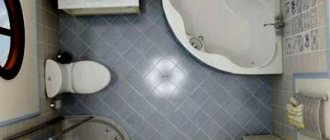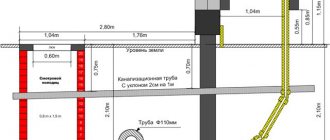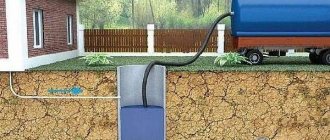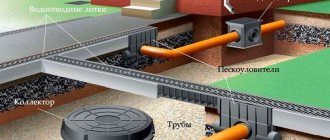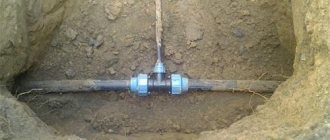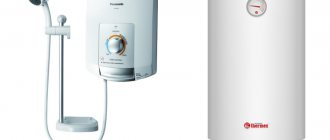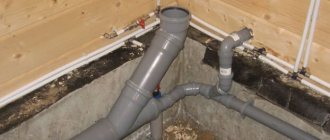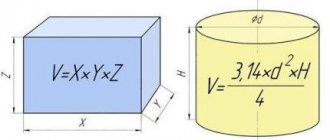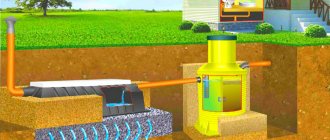New rules on the use of groundwater have been issued. Owners of private houses and summer residents became worried. After all, the so-called law on wells in a private home, which came into force in 2021, will entail new taxes and tighten the requirements.
Article 19.2 of the Law “On Subsoil” with the latest edition of 2019
Excerpt from the Law “On Subsoil”
As can be seen from Article 19.2, an ordinary summer resident or gardener should not worry. No one will force you to obtain a license for a well that you use for your own needs. Despite this, there are already reports of attempts at fraud and coercion to obtain fake “licenses”. Be careful not to fall for the tricks of scammers! The full text of the Law “On Subsoil” can be read on the ConsultantPlus website.
On the one hand, the subsoil belongs to the state. Drinking water is essentially a mineral, along with oil, gas, and coal. Its deposits and production sites are subject to state registration and control. Each well is entered into the state register and given a registration certificate.
Do you already have a well on your property or are you still thinking about the Pros and Cons?
Yes I think
On the other hand, why should a person who has developed a plot for which he has already paid a tax, invested his own funds in the construction of a private well in his country house, uses it occasionally and exclusively for personal purposes, pay more?
Control over water use is objectively necessary because it has a close relationship with the environmental well-being of life and the epidemiological situation.
Drainage in a private house
Water supply diagram in a private house
For the full functioning of the home water supply system, a sewer pipeline should be installed in a country house or cottage. The cross-section of the pipeline depends on the total volume of discharged wastewater. But for domestic sewerage, tubes with a diameter of 150-200 mm are often used.
The main requirement of SNiP is that pipes are laid with a mandatory slope towards the cesspool or septic tank. This eliminates system malfunction. According to the standards, the slope varies depending on the cross-section of the pipes. For a diameter of 200 mm, the level is 0.8 cm per linear meter of line. As the cross-section of the sewer system decreases, the slope level increases.
The drainage system is also installed below the ground freezing level
If this cannot be done due to the peculiarities of the terrain on the site, it is important to provide high-quality insulation of the main line. It is not advisable to install/install sewerage along the top of the street.
Otherwise, the system will constantly freeze. Or with this installation method, high-quality insulation is used.
By law, it is prohibited to install open (unsealed) cesspools in the yard. This leads to an environmental disaster and pollution of the village’s groundwater. As a wastewater receiver, it is better to build a homemade septic tank with 2-3 chambers and discharge waste into it. Many consumers/craftsmen prefer to install a factory cleaning tank. This is a plastic container with stiffening ribs. The places where the collector is supplied to the tank are reliably sealed to avoid leakage of wastewater into the ground. A sealed septic tank does not allow specific odors to pass through and efficiently cleans wastewater before it is discharged into the ground.
Wellbore formation
The process of manual percussion-rope drilling
In order to freely bring water into the house from a well, you must first reach the aquifer yourself or with the help of professionals. For this, the following drilling methods are used:
- Auger. It involves a gradual deepening around its axis of the installation with rounded blades and excavation of the soil upward. Used to drill a shaft in soft sandy-clayey soils.
- Shock-rope. Here a heavy steel sleeve with sharp serrated edges and a closing flap is used. The glass is sharply lowered into the ground from a height of 0.5-1 m. Thus, it captures part of the soil into its flask and lifts it up. The sleeve flap prevents soil from spilling out.
- Rotary drilling with parallel supply of water into the mine for its flushing.
For independent percussion-rope drilling, it is advisable to mount the winch on a tripod. It will automatically lift the mass of the driving glass with soil to the top.
Diagram of an artesian well
During the work, experienced specialists will take into account all the features of the facility where the work is being carried out. They will first prepare a special project. A turnkey artesian well will meet all your requests and needs.
Water quality
The difference between a well and a borehole is quite large. It's all about the aquifers, which are located at different depths. The well, drilled into sand up to 50 m, meets all sanitary control standards.
But only analysis in the laboratory will help you more accurately determine the suitability of the source. The flow rate of the installation depends on the correct drilling and installation of the casing pipe. Another important factor in the constant presence of liquid is the aquifer itself.
Artesian wells provide a cleaner and more reliable water resource. Due to the passage of liquid through several layers of soil and clay, it is purified and filtered. Often the flow rate of the source is so strong that it comes from the depths to the surface. Getting into such a vein is a great success for the owners of the land plot.
A key well can dry up at any moment or last for decades. As for water quality, it is relatively high. The pressure that forces fluid to move from the subsurface to the surface, pushing it through multiple rocks of the soil, purifying it.
In a mine well, the water still needs to be reached and its quality leaves much to be desired. In this case, you need to know exactly where to start excavation work. Often it is unsuitable for drinking and cooking. In a garden plot or country house it can be used for watering or animals.
The Abyssinian spring is deeper than the mine one, which means the water in it is cleaner. The core well is not in danger of silting. The aquifer through which the pipe passes lies at a depth of up to 40 m. The source is recharged through the upper and lower sand layers. An artesian located nearby has a positive effect on the flow rate of the well.
Prices for artesian wells
The cost of drilling artesian wells is higher than the cost of sand wells due to the greater depth and complexity of the process. But, as a result, you will receive higher quality water, pressure sufficient for any domestic purposes, and well durability. The price of an artesian well for each district of the Moscow region can be found in our price list.
| Water well type | Depth | Cost of drilling and turnkey installation with adapter | The cost of drilling and equipping a well with a caisson |
| Sand well with metal casing, diameter 133 mm | Up to 35 m. | We do not equip sand wells with an adapter and caisson. We offer installation of a kit (Pump “Baby”, cable, cable, hose) costing 13,000 rubles | |
| Sandy (Deep sands, for certain areas) with plastic casing pipe with a diameter of 135mm | Up to 70 m. | From 200,000 rub. CALCULATE | From 230,000 rub. CALCULATE |
| Artesian well with casing metal pipe, diameter 133 mm | 60 m | From 250,000 rub. CALCULATE | From 270,000 rub. CALCULATE |
| Artesian well with double casing (Metal 133 mm + Plastic 117 mm) | 60 m. | From 270,000 rub. CALCULATE | From 300,000 rub. CALCULATE |
| Artesian well with double casing (Metal 159 mm + Plastic 135 mm | 60 m. | From 300,000 rub. CALCULATE | From 400,000 rub. CALCULATE |
Do you want to know how much it costs to drill an artesian well or ask other questions? Call!
Control over the drilling process, although not your responsibility, is desirable. Only in this case will you be able to determine for yourself how and with what quality the drilling team works. Only in this case the warranty period will become invisible to you, and your well will work properly for many years.
Selecting a well type
The presence of water in the house is the main component of a person’s comfortable existence.
To organize the water supply system for a cottage, including a bathhouse, a swimming pool, all plumbing points in the house use a sandy or artesian source.
The first has a depth of 15 to 40 meters, depending on the terrain and the location of the aquifer. Before drilling a sandy hydraulic structure, it is advisable to conduct reconnaissance hydrogeological surveys. The advantages of such a well:
- service life - 10-15 years;
- good quality water that can be drunk immediately; often you don’t even have to install complex filter systems for iron removal or reverse osmosis;
- the possibility of drilling with your own hands, the process will take from 2 to 5 days;
- productivity - 0.5-1.5 m3/hour;
- minimal siltation of the source, provided it is located in coarse sand.
The structure of an artesian well and a sand well
A sand well can be freely preserved for the winter, if necessary.
The artesian spring has a depth of 50 to 200 meters. The level of occurrence of the aquifer depends on the volume of the resource in the floodplain of the river in a particular region. The well has a high productivity of 2-5 m3/hour. This allows you to supply water to several large cottages or even a small village at the same time. Drilling of an artesian source is carried out only using sophisticated equipment. In addition, a well of this type requires a license/permit. Artesian spring resources are taxed. The service life of a well is about 50 years.
Choosing a drilling site
The well must be located so that distances are maintained to guarantee its protection from contamination.
Before installing a water supply from a well in a private house with your own hands, it is important to determine the location of the source. It must meet the following criteria:
The distance from a residential building is at least 5 meters. The distance between the well and the point of discharge of sewage waste should be maximum, but not less than 15-20 meters. It is important to maintain the possibility of free access to the source. It may be needed during repairs or maintenance. You can determine the drilling location (the expected location of the aquifer) with the help of professionals or by external signs
The proximity of an underground vein is indicated by:
You can determine the drilling location (the expected location of the aquifer) with the help of professionals or by external signs. The proximity of an underground vein is indicated by:
- lush vegetation, characterized by richness even in the heat;
- abundance of midges in the desired area in the evening;
- dogs' love of the aquifer location on hot days;
- thick billowing fog in the morning over the aquifer.
Water well depth: what it depends on
Before you begin developing a water supply system project, you need to know what criteria influence the drilling of a well and what its optimal depth should be.
To do this you need to consider:
- The depth of the aquifer. This value can be determined using test drilling or after carrying out geodetic work to analyze the area.
- Purpose. For simple irrigation, it is not necessary to reach the lower aquifers by installing an Abyssinian well, but for drinking water you will have to look for water whose quality will meet regulatory requirements.
- Terrain. The features also include the earth's profile: on flat areas, water can not be found so deep, while hilly areas will require drilling at the lowest point - a depression.
- The required volume of water, or flow rate. This is the amount of water pumped per unit of time, called well productivity. For example, for irrigation it is enough to take into account a water consumption of 0.5 m³/h, and for sandy layers the flow rate increases to 1.5 m³/h.
For artesian wells, the volume can reach 4 m³/h.
Comparison of well and borehole
In a private or country house, problems with water supply often arise. Typically, owners equip an autonomous source. As a rule, a well or borehole option is chosen.
A number of criteria are used to compare the pros and cons. First, the difficulty of finding the water layer is taken into account. From this point of view, the construction of a well is very difficult, because it requires thorough drilling. And for a well, due to its shallow depth, the procedure will not cause problems.
When choosing a source for water, you need to take into account the level of its pollution
For residents, water quality comes first. In a well source, the liquid is protected by a large layer of soil. In a well, contamination can easily get into the source due to its shallow depth.
When installing a well, professional equipment is used, which simplifies the process. But for a well, most of the work is done manually. But when connecting communications there are more difficulties - when arranging the well option.
The amount of liquid in the well is greater than in the well. And this does not depend on the season, which is often observed at wells. The quality of the fluid itself from a well source is quite high, but the fluid may contain impurities. The problem is resolved using a filter. The quality of water in the well is getting worse and worse every year.
The longevity of a well source can be measured in decades. At the same time, installations rarely require maintenance. The well is also durable, but requires periodic cleaning. A higher cost is observed when constructing a well.
This is interesting: Abyssinian water wells
Needle well and tube well: features of arrangement and use ↑
Tube well and Abyssinian are varieties of the classic well with differences in the arrangement of the trunk. Instead of rings, a tubular source shaft is formed from steel pipes, and an Abyssinian well is a needle-shaped well made from small-diameter steel pipes. The water intake is drilled to a depth of 15 m. Wells of this type cannot always be installed at the level of aquiferous sand, and groundwater cannot be used as drinking water.
Service life and water quality in a tube well ↑
The Abyssinian well is an improved type of tube well. Despite the shallow depth, there is a chance to get fairly clean water: high water and precipitation do not penetrate into the source. One of the main advantages is the low cost of arrangement and ease of implementation. An Abyssinian well can be made without the involvement of specialists.
The Abyssinian needle well can be used to collect drinking water for one home
The depth of the source ranges from 8 to 15 m. The first aquifer layer of sand lies at this depth. The end of the casing pipe is installed at the boundary between the layers of loam and sand. The main difficulty is to find a place where there will definitely be water at a shallow depth. Usually they are guided by the presence and depth of neighboring water intakes. If the areas are located at the same height, there is a high probability that the water layer occupies a large area.
An igloo well is constructed exclusively in soft soils: clay, loam, clay with layers of sand, quicksand. Such wells cannot be drilled in rocky soil: if a needle hits a boulder, all the work will have to be redone.
Small diameter drive pipe is not designed to pass through rocky soil
Water can be used after testing. Usually the quality of the water is acceptable, and if a filter system is installed, it can be used for cooking. The service life of a well does not exceed 10–12 years. The flow rate is subject to seasonal fluctuations, up to 1.5 m3. The amount of water is enough for 1 – 2 water points.
How to plug and equip an Abyssinian well ↑
Surface water intakes are plugged using the impact-rope method. When constructing an Abyssinian well, the pipe is simultaneously the lower part of the casing and the drill. A pipe equipped with a needle-shaped tip and a filter is driven into the ground.
Instead of the impact method, a hand drill or MBU is used
After passing to a depth of 150 cm, the next segment is screwed on (or welded). The finished source is equipped with a surface or submersible pump. To install the equipment, a pit is first prepared, which must be thermally insulated.
Seasonal water supply can be organized in the open ground with flexible hoses
Small wells require constant operation. Regular water intake prevents the filter from clogging. Systematic cleaning can extend the life of the source. Preventive cleaning is recommended annually.
Water supply to a private house from a well; system diagram for a private house
In order to draw up a diagram for the supply of drinking or technical water to your country house, you must first decide on the schedule for its operation. If the building is intended to be used seasonally, then installing a water supply system from a well will be the best option to meet household needs. For permanent residence, taking into account the volume of daily water consumption, it is recommended from a well.
What factors to consider when developing a water well installation plan?
Selecting a water consumption plan begins with conducting geological studies of the site and determining the type of water intake source. Wells and wells may differ somewhat from each other in their structure and method of construction. The degree of their difference depends on the boundary of the aquifer.
Based on the nature of their location and hydraulic characteristics, resources are divided into several types:
Wells and wells differ in structure.
- perched water;
- ground;
- interlayer (filter);
- artesian (pressure).
Verkhodka, as well as layers with groundwater, are located close to the surface and are not reliable, since their reserves depend on the volume of precipitation.
Filter and artesian springs are located at great depths, have a powerful aquifer layer that is independent of weather conditions, have a constant temperature and are protected from pollution.
Taking into account the characteristics of the workings, we carry out test drilling on the site. After this, we determine the location of the water intake point, the depth of the mine, and the method of supplying the resource. Based on the data obtained, we select equipment, the type and completeness of which depends on the following factors:
- In what way is it planned to extract the resource (with a deep-well pump or will a pumping station with automation and a hydraulic accumulator be used).
- The length of the route from the source to the point where water enters the building.
- Number of water devices in a private house.
- Required amount of resource.
The information obtained will allow you to competently and professionally draw up a water supply project for the building, taking into account permanent residence.
Advantages and disadvantages of a typical water supply scheme for a private house from a well
from underground workings, in comparison with the central supply system, has a number of advantages:
- Ensuring the household needs of the house without the participation of the city water utility.
- No monthly subscription fee.
- The pressure and quality of drinking water depend only on the material capabilities of the user.
- The volume of the resource is regulated by the owner of the house based on the amount of installed equipment.
Water supply to the dacha from underground workings.
Flaws:
- The depth of aquifers depends on regional conditions.
- If an artesian well is used, then the price of the finished output is high.
- The need to install additional devices (pump, automation, caisson, etc.).
- If the horizon is weak, there is a possibility of silting of the channel.
Features of a water supply tower scheme in a private house from a well
The tower supply method involves installing an additional tank at the top of the building. To adjust the filling level of the container, the tank is equipped with a float valve.
A submersible pump pumps water through an open valve into the expansion chamber. In this case, the float gradually rises under the influence of the liquid, dragging the mechanism flap along with it, and upon reaching the maximum planned threshold, it shuts off the flow.
Diagram of a water well in a private house with a pump and two-stage supply
Device diagram.
With a two-stage method of supplying resources to the system, an additional pump is installed behind the storage tank, and a hydraulic accumulator is placed behind it. This method allows you to stabilize the pressure in the main line even at low power of the supply station.
After filling the expansion tank, water from the container flows by gravity into the pump chamber, which pumps it into the membrane cavity of the unit. The diaphragm of the device at the right moment pushes the liquid further along the line, thereby maintaining the required pressure force at all flow points.
Stages of arrangement
It is quite simple to build a well on your own at your summer cottage if you adhere to the following technology:
- Determine soil characteristics.
- Select the type (method) of work.
- Prepare special equipment and select equipment for drilling wells.
- Drill the first section and install the casing. The strength of the column must be such as to withstand soil pressure.
- Drill a second section and also secure it with pipes.
- Upon reaching the aquifer, take a water analysis for examination. If the obtained indicators satisfy the requirements, then you can begin installing bottom filters. Otherwise, it is recommended to continue the process until the next aquifer (about 2-4 m lower).
- When the drilling work is completed, you should fix the casing pipe, check its tightness and install the cover.
- Establish places for inserting pipelines and lay a water supply system from the source to the consumer.
When a clay or sandy layer is reached, drilling can be stopped and the filled well can be pumped and cleaned.
When installing a caisson, it is necessary to dig a pit in accordance with the developed project. The height of the chamber will depend on the dimensions of the pumping equipment, and the depth will depend on its purpose and period of operation: drinking or for technical needs, seasonal or year-round.
Difference between well, borehole and column
In addition to wells and various types of wells, in the absence of a centralized water supply, water intake columns are often used, characterized by a relatively simple design, installed in a well or directly on the ground, and represented by a valve, an ejector, water-lifting pipes, as well as a column with a special lever.
Despite sufficient performance and visual appeal, such designs have a number of disadvantages:
- mandatory presence in the water supply network of sufficiently high pressure, which will allow the equipment to function fully;
- the likelihood of water freezing in winter, especially if the pressure in the system is too low;
- risk of groundwater or rainwater ingress, even with an appropriate valve system designed to limit the ingress of third-party liquids.
How are artesian wells drilled?
The well itself is drilled using a rotary method using a drilling rig. The drilling rig is mounted on ZIL and URAL vehicles. The drilling itself is carried out by rotating bits attached to the drill rod. Primary drilling is carried out to the limestone using a large bit so that a casing string (there may be more than one) can be lowered into the well in order to block the upper horizons of dirty water. Further drilling is carried out with bits of smaller diameter. After opening the well, a production string with perforated walls is lowered into it.
Filtration well
A filter well is a well that reaches interstratal waters, which lie at a depth of up to 80 meters. Most often, such wells are equipped for private or commercial use. To make such a well you will need powerful equipment. In some cases, you can assemble it yourself if you have certain skills. In areas with soft soils, auger drilling is used. In other cases, rotary drilling stations are used. They cope well with rocks and hard layers.
Advantages and disadvantages
Among the advantages of such a well are:
- high water quality;
- long service life;
- good debit;
- good water mirror.
Water can come from underground rivers, as well as that which falls with precipitation. At the same time, it is very well filtered, because it passes through several different layers. The service life of such a source can exceed 15 years. In some cases, the water is supplied at such pressure that pumping equipment is not required to lift it. Only superficial is needed. Good wells are ready to produce up to 4 cubic meters of water per hour. There are also negative sides to this solution:
- high costs;
- difficulty of maintenance;
- rust may occur;
- a permit for subsoil development is required;
- Possibly high mineral content.
In most cases, you will have to hire a contractor who would cope with the task of drilling such a water well. It is necessary to obtain some permits from the relevant authorities for drilling to such depth. Water from such a well may have increased mineralization. This manifests itself in severe scale on dishes, as well as salt deposits in human organs. To reduce it, you will need to install a good water filter station, which carries additional costs. Maintaining such a water well is also not an easy task, which requires additional pumping equipment or the use of reagents.
Legislative regulations governing water intake
Control over water use lies entirely with the state due to the limited reserves of minerals, the quality and epidemiological situation of the water used. It is extracted using wells from horizons of a certain level. There is no separate article in any normative act on this matter. Most issues related to permitting, obtaining a license, registering a well, etc., are regulated by the following norms and by-laws:
- Law of the Russian Federation “On Subsoil” as amended and supplemented No. 2395−1 of 1992;
- Resolution of the Armed Forces of the Russian Federation “Regulations on the procedure for licensing the use of subsoil”, as amended No. 3314−1 of 1992;
- Instruction of the Committee on Geology and Subsoil Use (Roskomnedra) No. 583 and No. 2395−1 (instructions for the practical implementation of the normative act) of 1994.
Additionally, you should study Art. 7.3 of the Code of Administrative Offences. This document provides for liability for non-compliance with the law on water wells.
Equipping a well with pumping equipment
Typical diagram of an autonomous water supply from a well
Once the source for a house in the village has been drilled and the casing pipe has been installed, it’s time to start installing the water supply from the well. To supply liquid to the cottage and all other auxiliary premises, you need to use a good pump. It is selected according to the following source parameters:
- total depth;
- water level in the well;
- source performance;
- pressure: the total length of the vertical and horizontal sections of the pipeline from the point of water intake to the farthest plumbing fixture;
- power – a frequency converter will help reduce energy consumption.
One of the types of pumps is used for drinking wells:
- Surface. It supplies water from a depth of up to 8-9 meters. Ideal for springs, also called Abyssinian. They are drilled for high water. But such a structure does not have a large flow rate. More often the productivity is about 0.3 m3/hour.
- Submersible deep. It pumps water from different source levels from 20 to 150 m. It looks like a cylinder that is placed in a casing. The price of a submersible unit is always higher than a surface unit.
Additionally, it is recommended to equip pumping equipment with a hydraulic accumulator. The storage membrane tank maintains stable pressure in the system and eliminates the presence of air in it. In the event of an emergency power outage in the area, the family has a supply of water for 1-3 hours, depending on the volume of the hydraulic accumulator. The optimal tank volume is 50-150 liters for 3-4 people living in a house. Detailed diagram of water supply for a private house from a well with a hydraulic accumulator:
- submersible deep pump;
- well adapter (the device looks like a dovetail);
- hydraulic accumulator;
- check valve;
- pipeline from the tank to the house.
All elements are assembled sequentially into one system using high-quality sealant.
Pump installation
Diagram of the correct location of a submersible pump in a well.
A submersible deep pump is mounted in this way:
- A water supply pipe is attached to the outlet pipe using a fitting. Its length should reach the point where the downhole adapter is located.
- At the same time, the electric cable of the pump and a safety cable are laid on the ground. It is advisable to take not steel, but strong nylon.
- All three elements (cable, pipe, cable) are tightened with clamps in increments of 1 m. Strong tension or sagging of each component of the fastener should be avoided.
- A technical hole is made in the casing below the soil freezing level for the outlet of the well adapter. Its back part is connected to the water intake hose and inserted into the connector. From the outside of the casing, the first part of the adapter is connected to the front part and tightened well.
- A section of pipe is connected to the element, which will lead to the hydraulic accumulator.
Hydraulic tank installation
A visual diagram of connecting a pump and a hydraulic accumulator. The
storage tank is placed in a caisson, connecting it to the water supply pipe. One check valve must be installed at the inlet and outlet of the tank. Their connection prevents the outflow of water from the system.
The step-by-step operating principle of the drive is simple:
- When the reservoir chamber is filled, the membrane partition leads to a change in pressure (its increase).
- At this moment the pump switches off.
- As soon as the taps are opened in the house, the liquid leaves the storage tank and the pressure in it drops.
- When the atmospheric indicator decreases, the pump turns on again, replenishing the water reserves in the tank.
To ensure that the on/off cycles of the injection equipment are normal, the operating pressure indicators are adjusted. To do this, a homemade station needs to be equipped with a pressure gauge with a sensor and a relay. The lower pressure limit is 1.5 atm. Upper - 3.5.
At the outlet from the hydraulic tank, a pipeline is pulled from the caisson to the house.
Where to drill a well?
A water well can be drilled either in an empty or in an already developed area with buildings and plants. If the site is empty, then before choosing a location for a future well, you need to take into account the entry point for the car, the location of the construction of future buildings and underground communications.
You cannot place a well in the basement of buildings or in a place where they will later be erected. If you build a house over a well, it will not be serviceable. There will be no room to pull out the pump along with the entire column consisting of plastic water pipe, electrical cable and steel safety rope. The drilling rig, which is needed for some service or repair work, will not approach the well head - a gate 3 m wide is needed, the height of the drilling mast is 8 m.
choosing a location for a well on the site
In the basement of a house you can drill a very shallow “Abyssinian well”, the so-called igloo well. But such a source will provide too little water, and it is impossible to build an autonomous water supply on its basis.
Pump installation
Before supplying water to the house from the well, the pump is equipped with a check valve. This scheme is designed to prevent water from draining back into the source, and to prevent water hammer, which increases many times over at great depths due to pressure changes. The valve is connected to the line through an American crimp coupling.
The pump is inserted into the well using a cable or synthetic cord, which is attached to the eyes on the housing. An electrical cable is attached to the cord to connect the pump. The pump should not reach the bottom, otherwise it will pull sludge to the top. Before removing the pump from the well (for repair, maintenance, or for winter storage), it is disconnected from the power supply.
Water is supplied to the house through pipes laid in the ground at a depth below the freezing point; the entire route is insulated. The easiest way to make insulation is with a polyurethane foam shell; it’s cheaper to cover the route with a layer of expanded clay, which is waterproofed on top. Water must be brought into the house through the foundation; it is better to turn the pipe to a vertical position smoothly, not at an angle of 90 0 - this approach will reduce the possibility of water hammer occurring.
The pipe from the well is connected to a storage tank, from which water is distributed to water collection points and supplied to other equipment - a boiler, boiler, washing machine, and so on. Before you start using your home water supply, it is checked for functionality and tightness.
In the scheme, when the pump is located in a well or connected to a well at depth, and the equipment is located indoors and not outdoors, the storage tank is installed lower than the pressure switch.
Before you independently bring water into the house and distribute flows in plumbing equipment, you need to make sure that it is suitable for drinking. To do this, water analysis is carried out at the local SES.
A set of filters is purchased depending on the test results. These filters are added to the circuit regardless of the previously installed coarse and fine filters at the ends of the water supply.
Providing a private home or summer cottage with water is one of the main aspects of a person’s comfortable life. A complete water supply and proper drainage allow you to solve a number of everyday issues, and also make it possible to use all the benefits of civilization: a washing machine, dishwasher, and various plumbing fixtures.
The most common method of water supply is water supply from a well. Let's consider the main stages of arranging the water supply at home and practical recommendations that ensure the reliability and stability of the water supply system.
External water supply
Laying external water supply networks
When installing a water supply system for a private house from a well with a hydraulic accumulator, it is important to correctly lay the pipes outside. Products made from HDPE are considered the best options.
Low-density polyethylene withstands temperature changes well, is easy to install, and is resistant to deformation.
For laying pipes, you need to dig a trench from the caisson to the foundation of a cottage, swimming pool, etc. The depth of the channel is below the freezing level of the soil. This parameter is often 0.8-1.5 m depending on the region.
The pipes are joined using special electric couplings. When heated, they melt the HDPE material and make the joints airtight.
It is better to enter the line into the house through the foundation. Here you should use a hammer drill bit to make a hole. It is reinforced with a steel sleeve. The water supply to the house from the well is hermetically sealed, and all gaps are additionally coated with bitumen mastic.

